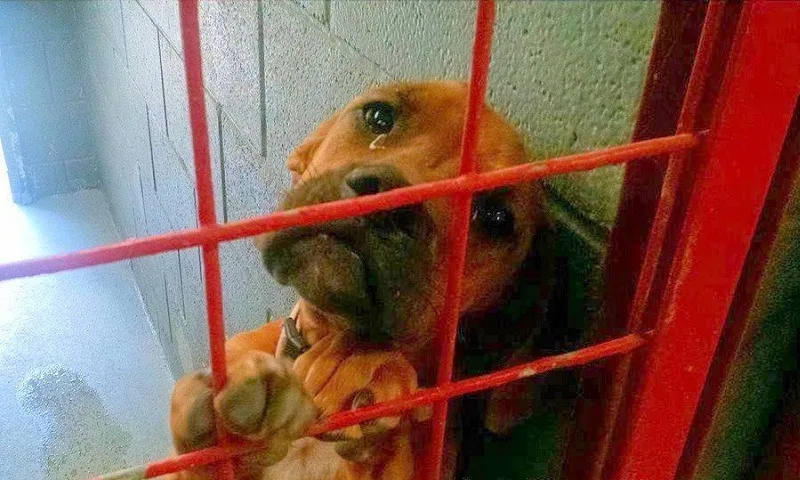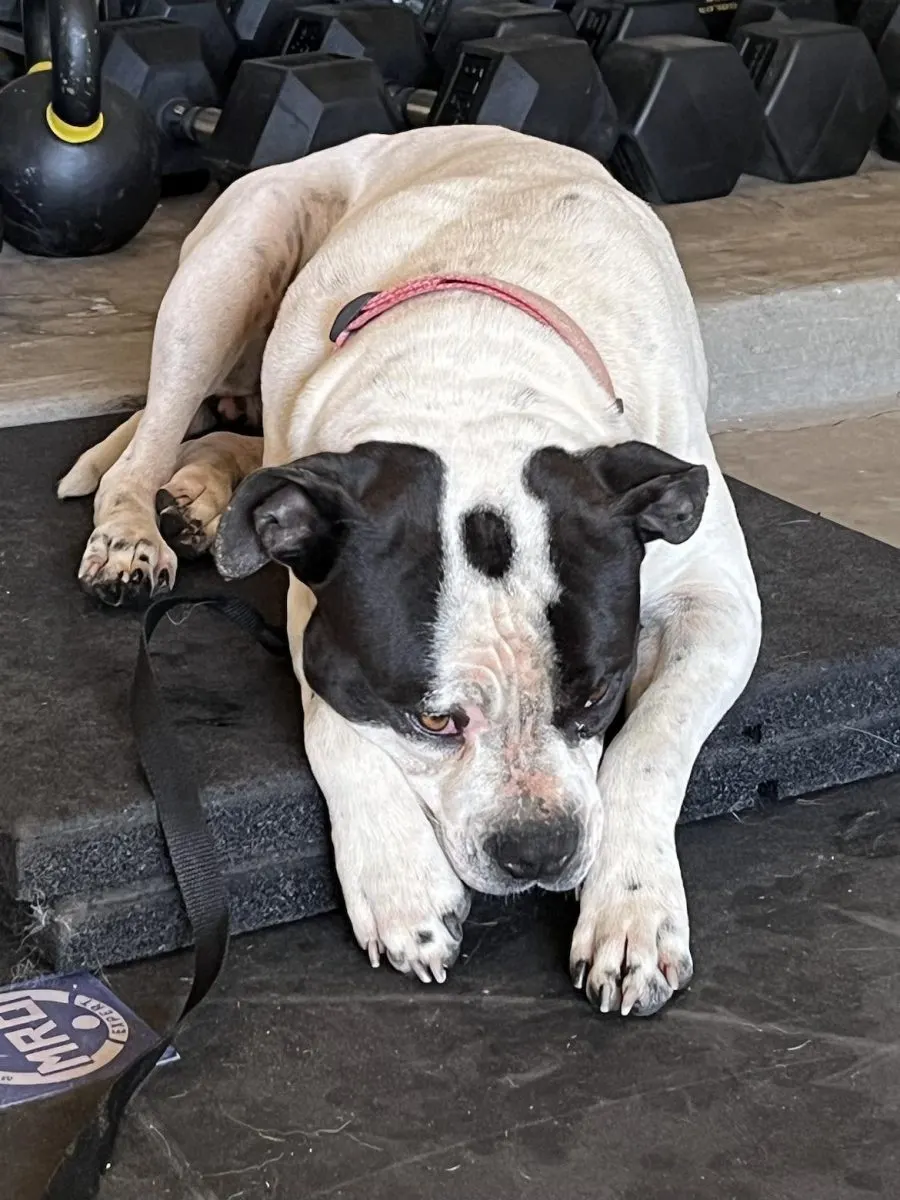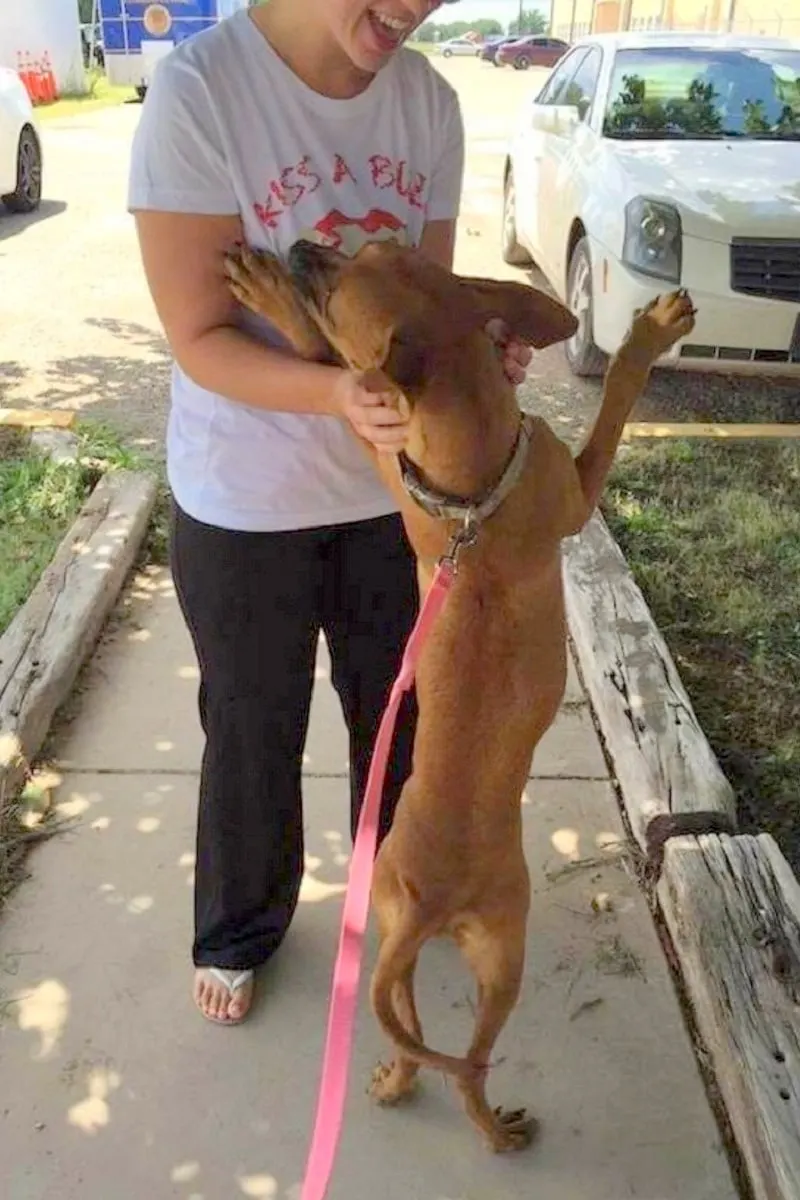There is never a good reason to abandon a pup that gave nothing but unconditional love to its owner.
People who easily leave pooches behind are usually the ones who take dogs for granted and don’t realize these sweet animals have feelings, too.
Fortunately, there are always good Samaritans willing to help and take those pooches to a shelter, but that rarely heals the wound of the owner’s betrayal.
Tears Behind Bars
Being placed in a shelter is a much better option than being left outside without food, water, and a warm place to sleep, but it’s still not a warm home and a loving family.
A doggo that was pictured by the High Plains Humane Society (HPHS) in one of the partnering New Mexico shelters is yearning for cuddles attention, and a loving owner who won’t betray him.

The HPHS is focused on saving animals in Curry County and surrounding areas from abuse and negligence. The organization promotes positive stories, but it also points out the issues regarding dog-owning and abandonment of canines.
The HPHS staff regularly take pictures of pooches at their and their partnering shelters, which is how they got to meet a little doggie that was completely devastated and even had tears in his eyes.

The pup seemed to be so sad behind the kennel doors that the staff decided to take a photo of him behind the metal bars and show the reality of a dog’s life after abandonment.
The photo they got was heartbreaking, but the story behind it is even sadder.
The doggie looked so sad, like he knew no one was coming to pick him up from the shelter and that he would stay there for the rest of his life.
During the photoshoot, he looked like he was begging someone to take him home.
Dreams Do Come True
When the HPHS got their photos published on their official Facebook page, the staff had a good feeling regarding the crying doggie. Somehow, they knew that his time was coming.
And, they weren’t wrong.
Applications were coming from all over the world, as everyone wanted to adopt the pup that even got the name, “Crying Dog”.
The shelter volunteers picked out a woman who turned out to be the best choice for the pooch, as she was able to offer him a furever home filled with affection and positive energy, which brought out the best in the pup, too.

The story about the ‘Crying Dog’ has become hugely popular, which is why some people contact the shelter even today, although the pooch has been adopted long before.
The HPHS explained that they actually deleted the original post with the doggo’s photo and updated this one just to make sure everyone understands the current situation:
“We do appreciate the kind, concerned callers wanting to adopt her; however, the dog was adopted that day, 4 years ago.”
But, there are still plenty of wonderful pooches that deserve to be adopted, so I hope those interested in adopting Crying Dog have found another one that needs a home, too.
If you’ve noticed your furry friend constantly licking their paws, you’re not alone. It’s a common behavior that many dog owners wonder about. Paw licking can be a perplexing habit, leaving you wondering what’s going on in your pup’s mind. Dogs use licking as a way to communicate and soothe themselves, but when it becomes excessive, it might signal an underlying issue. Understanding the reasons behind this behavior can help you provide the best care for your canine companion.
As a seasoned dog trainer, I’ve encountered this question countless times. The reasons for paw licking can vary from simple grooming habits to more serious health concerns. By observing your dog’s behavior and knowing what to look for, you can better address any potential issues affecting your pet’s well-being. Let’s explore the possible explanations behind your dog’s persistent paw licking and how you can support them through it.
Understanding Paw Licking in Dogs
Identifying Normal vs. Excessive Licking
Licking their paws is a common behavior for dogs. It’s like how you might bite your nails when you’re nervous. But when does it become too much? If you notice your furry friend obsessively licking the same spot, causing irritation or hair loss, that’s excessive. It’s like when you can’t stop scratching a bug bite—it just makes it worse. Pay attention to how often your dog licks their paws to figure out if it’s excessive.
The Role of Grooming in Canine Behavior
For dogs, grooming is essential—it’s like when you brush your hair to keep it neat. Dogs lick their paws as part of their grooming routine. It’s their way of keeping clean and checking for anything unusual, like when you wash your face before bed. So, if your dog occasionally licks their paws after a walk or before bedtime, it’s just their way of staying fresh.
Common Causes of Paw Licking in Dogs
Injuries and Wounds
If your dog keeps licking its paws excessively, injuries and wounds could be the underlying cause. Dogs might lick a sore spot to keep it clean, but if it’s persistent, there could be a more severe issue like a cut, splinter, or even a thorn causing discomfort. Check your dog’s paw carefully for any signs of injury.
Allergies and Skin Conditions
Allergies and skin conditions are common culprits for paw licking in dogs. Environmental allergens like pollen or household chemicals, as well as food allergies, can lead to itchy paws. Similarly, skin conditions such as dermatitis or fungal infections can cause irritation, prompting your dog to lick excessively. Consult your vet to identify and address these issues.
Parasites and Infections
Parasites like fleas, ticks, or mites can make your dog’s paws itch, leading to constant licking. Moreover, bacterial or yeast infections in the paws can also trigger this behavior. Regularly check your dog for pests and look out for any redness, swelling, or discharge in the paws, which could indicate an infection.
Psychological Factors
Sometimes, paw licking can stem from psychological factors like stress, anxiety, or boredom. Dogs may exhibit this behavior as a coping mechanism or a way to seek comfort. Changes in routine, separation anxiety, or lack of mental stimulation can contribute to excessive paw licking. Providing proper exercise, attention, and enrichment can help address these underlying emotional issues.
Remember, understanding the reasons behind your dog’s paw licking is essential to provide the necessary care and support. If you notice persistent or concerning paw licking behavior, consulting with your veterinarian is crucial to ensure your furry companion’s well-being.
Diagnosing the Problem
When to Visit the Vet
If you notice your dog excessively licking their paws, it’s essential to know when it’s time to seek professional help. Visit the vet if the licking is persistent, causing redness, swelling, or sores on the paws, or if it’s accompanied by limping or other signs of discomfort. Your vet can rule out serious health issues and provide a proper diagnosis.
What to Expect During the Examination
During the vet visit, the examination may include a physical check-up of your dog’s paws, skin, and overall health. The vet may ask about your dog’s medical history, diet, and environment to pinpoint any underlying causes. Be prepared to discuss your dog’s licking habits, frequency, and any recent changes in behavior. Diagnostic tests like skin scrapings or allergy tests may be recommended to determine the root cause of the paw licking.
Treatment Options for Excessive Paw Licking
Medical Treatments
If your dog is excessively licking their paws, the first step is to consult a veterinarian. Medical treatments may vary depending on the underlying cause of the paw licking. For allergies, your vet may recommend antihistamines, steroids, or other medications to alleviate the symptoms. In cases of infections, antibiotics or antifungal medications might be prescribed to treat the issue. Skin conditions could require medicated shampoos or creams to soothe irritation. Additionally, parasites like fleas or mites may need specific treatments to eliminate them and stop the licking behavior.
Home Remedies and Preventative Measures
Alongside medical treatments, there are some home remedies and preventive measures you can take to help reduce excessive paw licking in your dog. Keep your dog’s paws clean and dry, as moisture can exacerbate the problem. Regularly check for any signs of wounds, cuts, or irritations on their paws and address them promptly. A balanced diet with essential nutrients can improve overall skin health and reduce the likelihood of allergies leading to paw licking. Using cone collars or bitter-tasting sprays can also deter excessive licking and give any wounds time to heal.
Behavioral Therapies
In cases where paw licking is linked to emotional factors like stress or boredom, behavioral therapies can be beneficial. Providing enough physical and mental stimulation through walks, playtime, and engaging toys can help redirect your dog’s focus away from licking their paws. Creating a comforting environment with a designated safe space or using calming techniques like massage or gentle music can reduce anxiety-related licking. Positive reinforcement methods such as rewarding good behavior and distractions can also assist in breaking the habit of excessive paw licking.
Remember, a combination of medical treatments, home remedies, and behavioral therapies tailored to your dog’s specific needs is essential in effectively addressing and managing excessive paw licking. Consult with a professional to determine the most suitable approach for your furry friend’s well-being.
Tips for Preventing Paw Licking
Regular Grooming and Care
Focus on maintaining proper grooming habits for your furry friend. Regularly trim the fur around their paws to prevent debris buildup. Ensure their paws are clean and dry to reduce the chances of irritation.
Choosing the Right Diet and Environment
Select a balanced diet for your dog to support overall health, including skin and coat condition. Avoid potential allergens in their food that could trigger excessive paw licking. Create a stress-free environment at home to minimize anxiety that may lead to paw licking.
Understanding Your Dog’s Stress Triggers
Identify what stresses out your dog, whether it’s loud noises, changes in routine, or being left alone. Address these triggers to help reduce their anxiety levels and discourage paw licking as a coping mechanism.
Remember, a combination of good grooming practices, a suitable diet, and a stress-free environment can significantly help in preventing your dog from licking their paws excessively. Tailor your approach to your dog’s specific needs for the best results.
Conclusion
So, there you have it – understanding why your dog keeps licking its paws is crucial for their well-being. Whether it’s a grooming habit or a sign of an underlying issue, being proactive in addressing the root cause is key. Remember, providing the right care, diet, and environment can make a big difference in managing excessive paw licking. By taking a holistic approach that combines medical treatments, home care, and behavioral strategies, you can help your furry friend lead a happier, healthier life. Stay attentive to your dog’s needs, and don’t hesitate to seek professional advice if needed. Your dog’s paws will thank you for it!
Frequently Asked Questions
Why do dogs lick their paws?
Dogs lick their paws to clean themselves, but excessive licking can signal allergies, injuries, or stress.
How can I prevent my dog from licking its paws excessively?
Prevent excessive paw licking by maintaining good grooming habits, providing a balanced diet, creating a stress-free environment, and identifying stress triggers.
What should I do if my dog keeps licking its paws too much?
If your dog keeps licking its paws excessively, consult a veterinarian to determine the underlying cause and develop a treatment plan.
Can excessive paw licking in dogs be managed effectively?
Yes, with a comprehensive approach including medical treatments, proper home care, and behavioral strategies, excessive paw licking in dogs can be effectively managed.
[no_toc]

Hey there, I’m Janet Brooks, a dog-loving student from California. I’m all about helping pups in need, especially those without homes. Me and my awesome friends work together to give shelter and love to stray dogs. Oh, and I also write blogs about dogs to share helpful info.